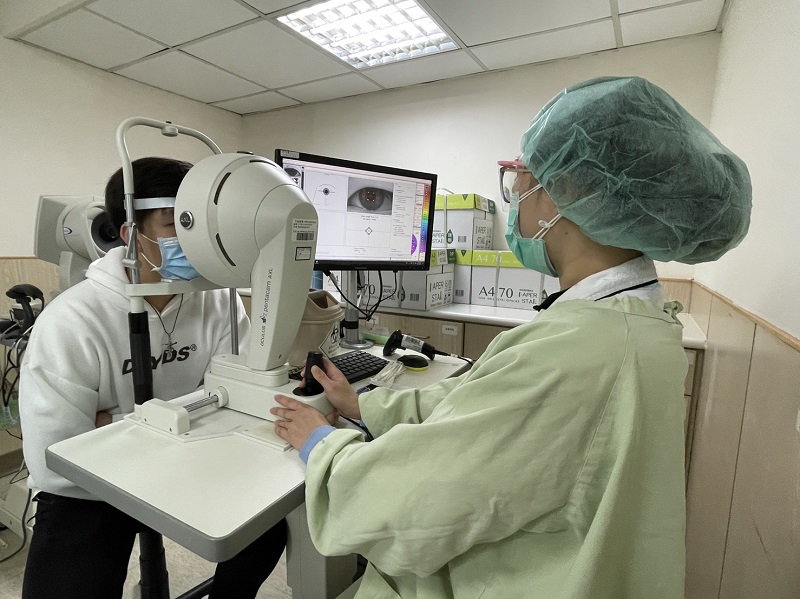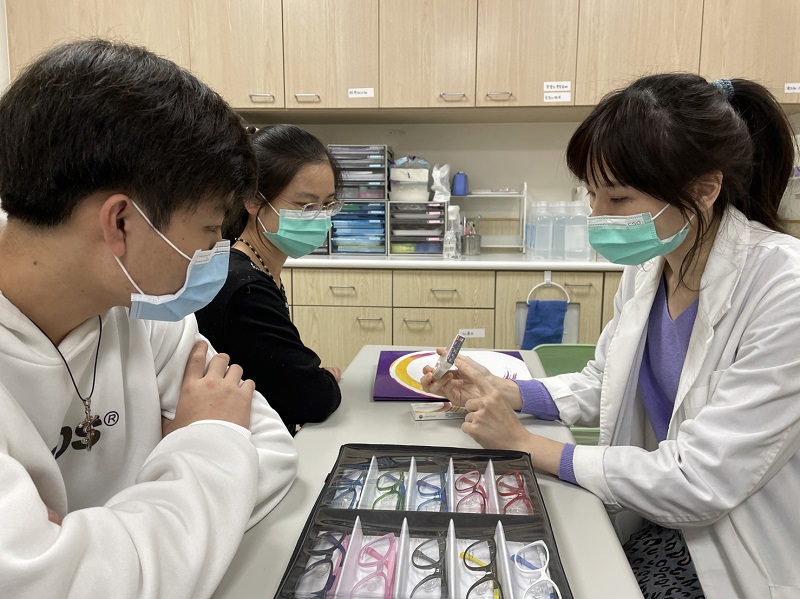News and Award
About CMUH
Proper implementation of universal myopia management prevents high myopia related complications
For 15-year-old student Wang, his myopia reached 400 after entering junior high school. Sunlight usually made him feel dizzy even though he had been applying long-acting mydriatics to prevent the myopia. Wearing glasses while playing sports is very inconvenient. Furthermore, he’s ever considered wearing the hard orthokeratology lenses at nights to control the myopia, but he cannot due to the foreign body sensation caused by the hard contact lens and subsequent insufficient sleeping time. Fortunately, daily disposable soft contact lens and peripheral defocus contacts are now available and have been proven to benefit myopia control. Considering student Wang’s desire not to wear glasses while playing sports, he chose the daily disposable soft contact lenses during the day. Not only are they convenient, but they have also been able to keep the degree of his myopia stable after two years of follow-up.

Taiwan is a kingdom of myopia, where more than 50% of elementary school students and 80% of junior high school students suffer from this issue. “Myopia“ is the result of an enlarged eyeball and thus is almost impossible to reverse. Just like a balloon, as it gets bigger, the wall becomes thinner. When the wall of the eyeball becomes thinner, it easily degenerates and can result in “pathological or degenerative change,” like the lattice degeneration of the retina at the surrounding areas, where clefts may easily occur and progress to retinal detachment. Furthermore, as the retina become thinner, transporting nutrients to the eyeball becomes more difficult, so developing macular degeneration or glaucoma is common. While wearing glasses is not terrible, the complications related to high myopia of a degree greater than 500 are more worrisome. All of those conditions may lead to irreversible visual impairments.
In addition to having good living habits and going outdoors to get plenty of sunshine, many large-scale studies have documented that applying long-acting mydriatics and wearing orthokeratology lens, peripheral defocus soft contact lens, or glasses are all effective methods for preventing myopia and delaying increases in myopia degree. The most effective way with a long history is applying well-known long-acting mydriatics like Atropine, but some juvenile patients cannot accept its side effects, like photophobia or an inability to focus while seeing objects at a short distance. Therefore, other treatments must be considered.

A “peripheral defocus soft contact lens” is a daily disposable soft contact lens that can be worn for 10-12 hours in the daytime and can be considered for patients who cannot adapt to the hard contact lens-related foreign body sensation, have insufficient sleep time or poor sleep habits, or worry about the cleaning issues. As per the regulations of the Ministry of Health and Welfare, both the orthokeratology lens and the peripheral defocus soft contact lens are approved for children at least 8 years old. Although the complication incidence rates of corneal ulcer, hypersensitivity, etc. are low, such complications may still occur.
Although myopia is related to genetics and culture, we can do something to prevent it. The Pediatric Ophthalmology Department in the hospital can provide the ”universal myopia management” and one-on-one health educational services with professional optometrists. In the first stage, patients will be checked for the degrees of myopia before and after mydriatics are used to measure the length of the axis of the eyeball and corneal curvature. Our center will also proceed the corneal cell count examination to follow up the cell counts that may be decreased due to poor oxygen supply. In the second stage, the physician will suggest optimal correction strategies and have patients try them on the same day. For stage three, patients will begin a close OPD follow-up plan with regular examinations of sight and corneal curvature, continuing assessment of the eyeball’s axial length. In the fourth and final stage, the patients will be assessed upon stopping wearing the lens during the winter or summer vacation, and the results of before and after wearing the lens will be compared to maintain the degrees of the myopia under a good status.
Close follow-up is necessary for proper myopia management. Generally speaking, by 18 years old, the growth of the eyeballs will probably stop, and you don’t need to worry about having myopia. Just properly controlling the increasing degrees of the myopia can reduce the incidence of retinal complications.



![[Taiwan–Malaysia Medical Innovation Forum] CMUH and UNIMAS Co-Host Major Medical Symposium to Advance Medical Technology and Precision Patient Care img](/FileUploads/News/20250714_131324.jpg?w=250&h=180&mode=crop&scale=both)